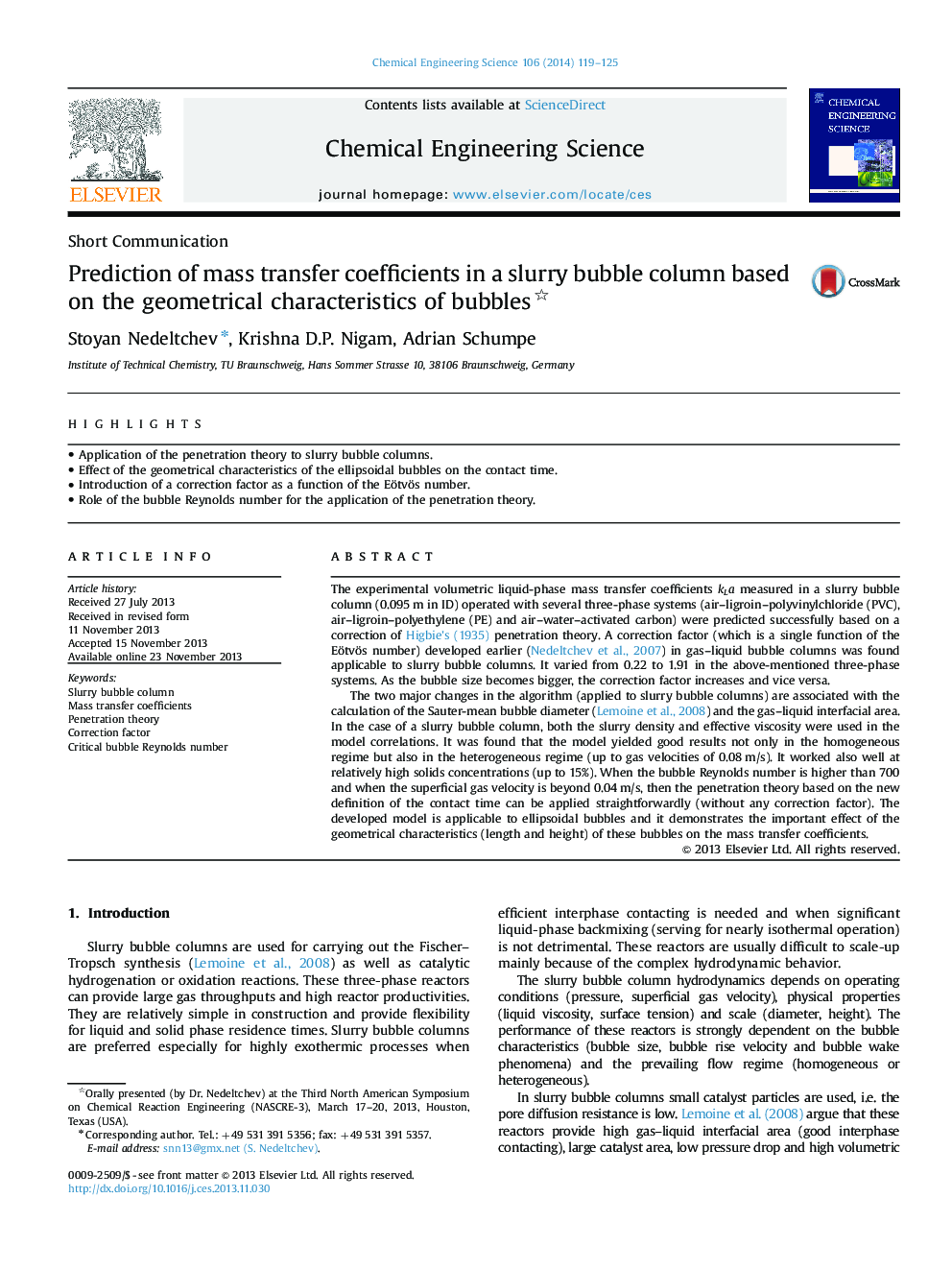| کد مقاله | کد نشریه | سال انتشار | مقاله انگلیسی | نسخه تمام متن |
|---|---|---|---|---|
| 155006 | 456877 | 2014 | 7 صفحه PDF | دانلود رایگان |
• Application of the penetration theory to slurry bubble columns.
• Effect of the geometrical characteristics of the ellipsoidal bubbles on the contact time.
• Introduction of a correction factor as a function of the Eötvös number.
• Role of the bubble Reynolds number for the application of the penetration theory.
The experimental volumetric liquid-phase mass transfer coefficients kLa measured in a slurry bubble column (0.095 m in ID) operated with several three-phase systems (air–ligroin–polyvinylchloride (PVC), air–ligroin–polyethylene (PE) and air–water–activated carbon) were predicted successfully based on a correction of Higbie's (1935) penetration theory. A correction factor (which is a single function of the Eötvös number) developed earlier (Nedeltchev et al., 2007) in gas–liquid bubble columns was found applicable to slurry bubble columns. It varied from 0.22 to 1.91 in the above-mentioned three-phase systems. As the bubble size becomes bigger, the correction factor increases and vice versa.The two major changes in the algorithm (applied to slurry bubble columns) are associated with the calculation of the Sauter-mean bubble diameter (Lemoine et al., 2008) and the gas–liquid interfacial area. In the case of a slurry bubble column, both the slurry density and effective viscosity were used in the model correlations. It was found that the model yielded good results not only in the homogeneous regime but also in the heterogeneous regime (up to gas velocities of 0.08 m/s). It worked also well at relatively high solids concentrations (up to 15%). When the bubble Reynolds number is higher than 700 and when the superficial gas velocity is beyond 0.04 m/s, then the penetration theory based on the new definition of the contact time can be applied straightforwardly (without any correction factor). The developed model is applicable to ellipsoidal bubbles and it demonstrates the important effect of the geometrical characteristics (length and height) of these bubbles on the mass transfer coefficients.
Journal: Chemical Engineering Science - Volume 106, 17 March 2014, Pages 119–125
